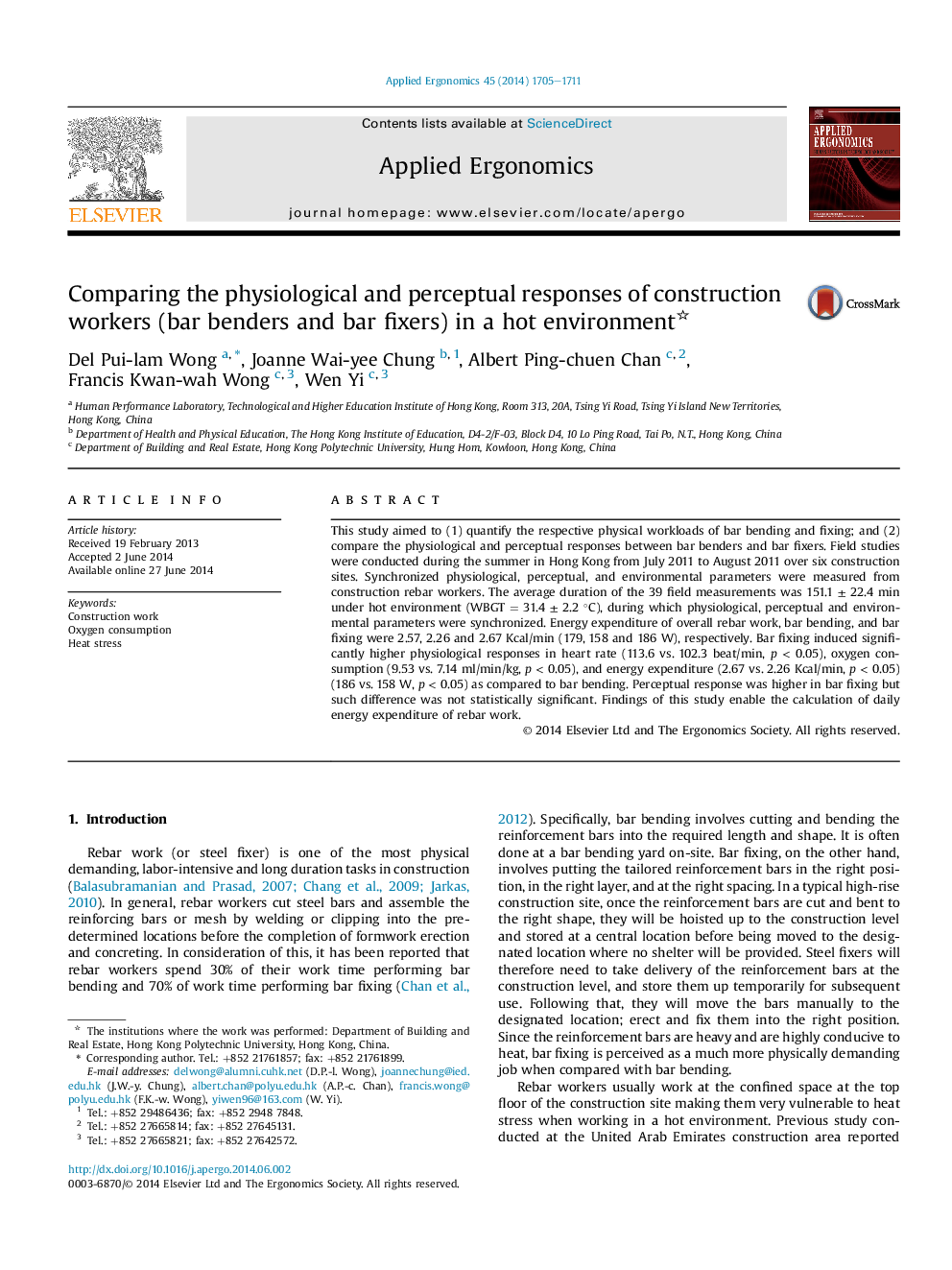| Article ID | Journal | Published Year | Pages | File Type |
|---|---|---|---|---|
| 10365778 | Applied Ergonomics | 2014 | 7 Pages |
Abstract
This study aimed to (1) quantify the respective physical workloads of bar bending and fixing; and (2) compare the physiological and perceptual responses between bar benders and bar fixers. Field studies were conducted during the summer in Hong Kong from July 2011 to August 2011 over six construction sites. Synchronized physiological, perceptual, and environmental parameters were measured from construction rebar workers. The average duration of the 39 field measurements was 151.1 ± 22.4 min under hot environment (WBGT = 31.4 ± 2.2 °C), during which physiological, perceptual and environmental parameters were synchronized. Energy expenditure of overall rebar work, bar bending, and bar fixing were 2.57, 2.26 and 2.67 Kcal/min (179, 158 and 186 W), respectively. Bar fixing induced significantly higher physiological responses in heart rate (113.6 vs. 102.3 beat/min, p < 0.05), oxygen consumption (9.53 vs. 7.14 ml/min/kg, p < 0.05), and energy expenditure (2.67 vs. 2.26 Kcal/min, p < 0.05) (186 vs. 158 W, p < 0.05) as compared to bar bending. Perceptual response was higher in bar fixing but such difference was not statistically significant. Findings of this study enable the calculation of daily energy expenditure of rebar work.
Related Topics
Physical Sciences and Engineering
Computer Science
Human-Computer Interaction
Authors
Del Pui-lam Wong, Joanne Wai-yee Chung, Albert Ping-chuen Chan, Francis Kwan-wah Wong, Wen Yi,
